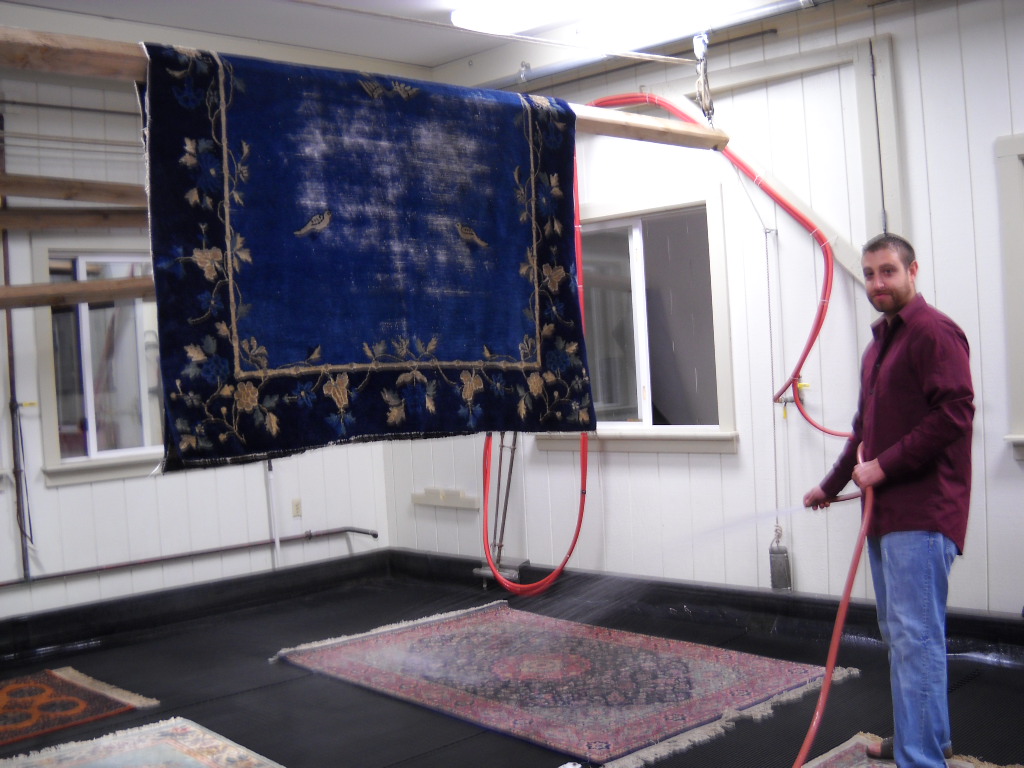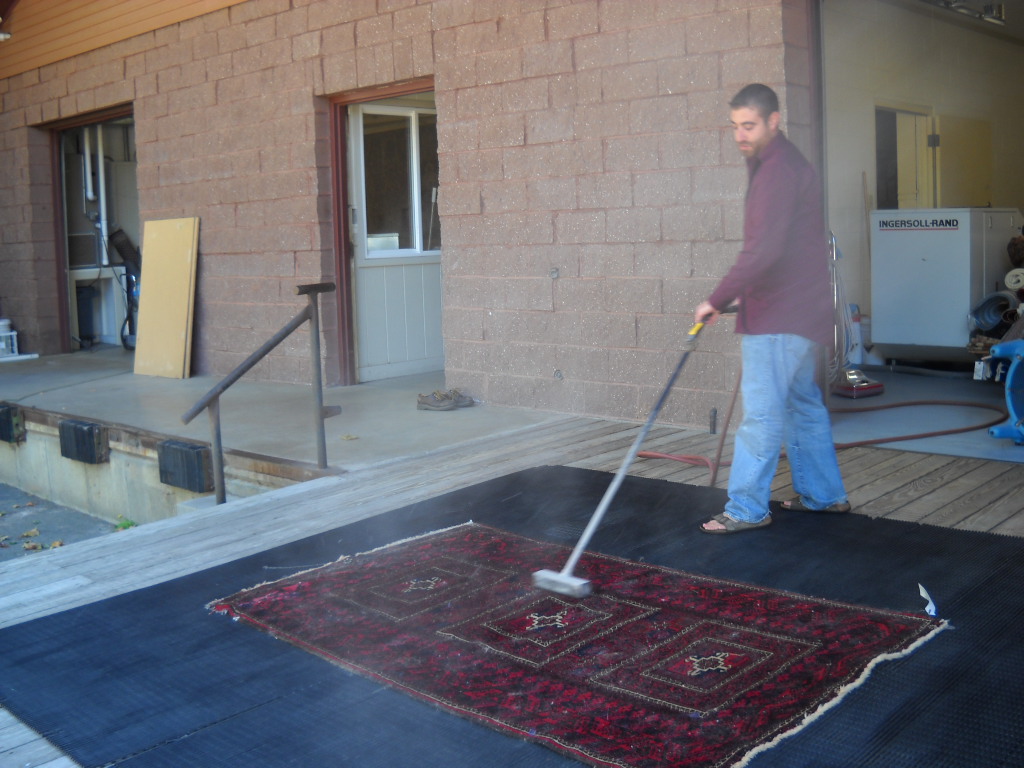Topics
Posted by Cris Carl | Oct 10, 2010 7 Lessons from a Professional Carpet Cleaner
What to Know Before You Clean Your Carpet
 No matter how clean we think we keep our home, sooner or later carpet cleaning is a necessity. If you have any type of carpeting in your home, whether wall-to-wall or area rugs, deep cleaning is a good idea every 12 to 18 months. You best bet is to hire a professional. Not all professional carpet cleaners are alike, however. Don’t be swayed by print or television ads that offer super cheap prices. Many of these “companies” are fly-by-night, or offer sub-standard work. And while you may like to do-it-yourself, rental carpet cleaners are the fast food version of carpet cleaning.
No matter how clean we think we keep our home, sooner or later carpet cleaning is a necessity. If you have any type of carpeting in your home, whether wall-to-wall or area rugs, deep cleaning is a good idea every 12 to 18 months. You best bet is to hire a professional. Not all professional carpet cleaners are alike, however. Don’t be swayed by print or television ads that offer super cheap prices. Many of these “companies” are fly-by-night, or offer sub-standard work. And while you may like to do-it-yourself, rental carpet cleaners are the fast food version of carpet cleaning.
You should always get an in-home inspection and written total price quote. Over the phone quotes cannot possibly take into account your particulars. Everyone has their own situation whether they have young children, pets, hobbies that can be messy; you entertain a lot, etc. The job really needs to be seen.
Dennis Cleary, owner of Pristine Orientals in Greenfield, MA, offered a number of recommendations for the average homeowner.
Who is really qualified to do the best job?
Cleary recommends hiring companies that have employees with IICRC (Institute of Inspection, Cleaning, and Restoration Certification) training. “There are 25 different categories of classes involved in the training,” said Cleary.
If you have wall-to-wall carpets:
Cleary said that most wall-to-wall carpets are made from nylon or polypropylene threads (basically plastic). “Wall-to-wall is essentially attached to the building, so you can only clean the top,” said Cleary.
First of all, the carpets need to be intensely vacuumed (and not just with your Hoover). “Otherwise it’s like trying to clean a carpet filled with mud,” said Cleary.
Cleary recommends the use of companies, such as his own, which employ the use of specialized “mounted” trucks that offer “a more powerful and efficient freshwater and recovery system.” Cleary’s trucks have specialized hoses, wands, and vacuums that are snaked into the home or office. Carpets are dye tested in spots to be certain cleaning soaps and chemicals will not damage the carpets. Hot water is generated in the truck and sprayed along with soap on the carpets. The rugs are “raked” to work in the soap and loosen dirt, the carpets are rinsed again with hot water and the resulting dirty water is extracted by powerful vacuums. Most carpet cleaning jobs done by professionals (unless your home is enormous) will take roughly 2 ½ hours for the work and 2-3 hours drying time. Most companies don’t charge for furniture moving. Also, don’t put your furniture back too soon, as wood may become damaged or you may end up with rust stains from any metal furniture. If you can, during the cleaning, leave a few windows open or put the heat on a little higher to speed the drying process along.

Area rugs and Oriental carpets:
After an in-house inspection, carpets are best removed to be professionally cleaned at a plant. Expect the cleaning to take at least five days. Cleary said to beware of companies that claim to clean your rugs in hours. “They put the rugs through a machine that looks like a printing press. The rugs are run through rollers and cleaned a bit like a car wash. The whole process only takes minutes.”
Oriental and many types of area rugs are more often made of wool, wool blends, cotton, sisal, rayon and other natural fibers. The in-plant process starts with “dusting” the rug with compressed air to remove loose dirt. Dye tests are done, and then the rug is soaked overnight. Cleary said to avoid companies who say they can clean area rugs and Oriental carpets in your home. “It’s like trying to wash your clothes while still wearing them,” said Cleary. The second day the rug is soaked in warm soapy water. Lower water temperatures are used due to the type of fibers. Wall-to-wall carpets, since they can’t be removed for cleaning and are more often synthetic fibers can withstand much higher water temperatures. Milder soaps are also used. The rug is left in the soapy solution until day three, at which point the rug is flushed with compressed air and water and hung to dry. Cleary said that in-plant cleaning assures optimal control of temperatures and the drying process. Finally, the fringe is cleaned and any specialized work such as repairs, deodorizing, moth-proofing, removal of gum or wax etc. is done.
Regarding pet stains:
Another case for professional carpet cleaning is what happens when your pets have “accidents” on the carpet. You may think you’ve cleaned the mess up, but often ammonium salts are left behind. During the winter, if your home is dry, you may not notice much in the way of odor as the salts remain crystallized. However, once the warmer, wetter months arrive, the salts absorb moisture and release more odor.
Chemicals and soaps that are used:
Cleary said that only for wall-to-wall carpeting are stronger chemicals and soaps used. If you have chemical sensitivities, discuss what the company uses and how to lessen the effects. Cleary said that they use fairly neutral products regarding Ph, but some wall-to-wall rugs with heavy soiling might require more alkaline soaps or cleaners.
What can you expect to pay?
Costs will vary according to the job and region. Cleary said the average for his company is 60 cents a square foot. However, if the job is very large, that number can go as low as 10 cents a square foot. “It’s all about efficiencies of scale,” he said.
Partner Sites
- About
- ·
- Privacy
- ·
- Terms
- ·
- Contact
- ·
- Affiliate Program
- ·
- Client login
- © Copyright 2009-2014 Networx Systems LLC. All rights reserved.
- Networx Twitter Networx Facebook Networx Google Plus
http://googleads.g.doubleclick.net/pagead/viewthroughconversion/10694681... />

![What does it take to get your significant other to pick up a broom? [bruno neves/sxc.hu]](http://cdn50.networx.com/media/185x90/brooms_f71b9463d10bdb39b8c265eb453320f5.jpg)

